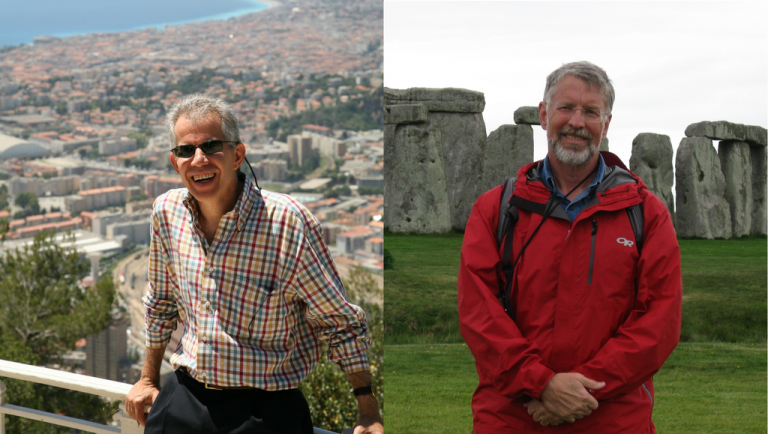Two UCF professors are part of an exclusive group of experts selected from across the country to advise NASA about a mission to pluck a boulder from an asteroid and put it in orbit around the moon.
Professors Humberto Campins and Daniel Britt were among 18 people picked for the panel that will help shape NASA’s “Asteroid Redirect Mission.” A hundred people applied for the mission’s Formulation Assessment and Support Team, or FAST.
“We thought it would be unlikely that NASA would pick two people from the same institution,” said Campins, an asteroid expert. “It shows NASA thinks highly of UCF’s planetary group.”
In 2002, Campins, who is a Pegasus Professor, the highest award attainable by a UCF faculty member, created the Planetary Sciences Group within the Department of Physics. He studies comets, asteroids and other small bodies in the solar system using a variety of ground-based, airborne and space-based telescopes. In 2010, he headed the first team to discover ice on an asteroid, bolstering the theory that water may have been brought to Earth by asteroids. Campins is a co-investigator on NASA’s OSIRIS-REx mission, and the asteroid 3327 Campins is named after him.
Britt, also a physics professor in the Planetary Sciences Group and the director of the NASA-funded Center for Lunar and Asteroid Surface Science (CLASS), has served on the science teams of NASA’s Mars Pathfinder and Deep Space 1 missions. He has built hardware for all of NASA’s Mars landers, including camera calibration targets aboard the Mars Curiosity rover. He studies asteroids, comets, Mars and climate change. He also has an asteroid named after him: 4395 DanBritt.
The Asteroid Redirect Mission announced in 2013 is the first-ever attempt to visit a near-Earth asteroid with a robotic spacecraft, collect a multi-ton boulder from its surface and place it into a stable orbit around the moon. According to NASA’s still-developing plan, astronauts in the 2020s would visit the boulder once it is placed in a lunar orbit, study it and collect samples to bring back to Earth.
The samples could tell scientists more about the formation of our solar system and the beginning of life on Earth. The mission is also meant to demonstrate techniques to deflect dangerous asteroids headed for the planet, as well as advance capabilities NASA will need if its plans to send a manned mission to Mars in the 2030s.
The FAST panel, which also includes members from Penn State, Arizona State, Johns Hopkins University and several NASA facilities, will help decide what kind of instrumentation the spacecraft should carry, what scientific experiments should be aboard, how best to measure and pick up the boulder, and more.
“We’ll be providing the scientific guidance for the things NASA wants to do and what they can expect. We’ll help them get the best possible science to do smart exploration,” Britt said. “We have a very strong group in asteroid science. I think they were interested in getting the strongest collection of people they could.”
The group will meet over the next few months, including an initial three-day meeting at NASA’s Langley Research Center in Virginia in September.
